Meetings 2015 - 2016
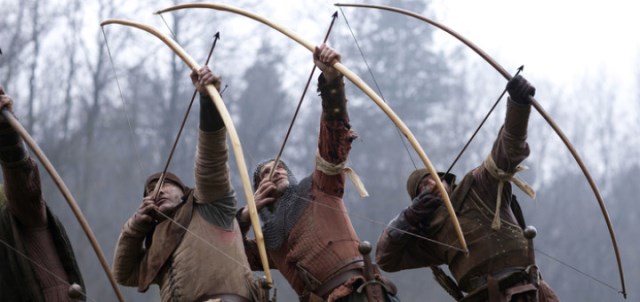 The new season of talks will begin with a presentation, on the history of the English Longbow, by Bernard Dennis.The first meeting of the year is always busy with new members signing up, current members (I nearly said “old members” but that wouldn’t be right) renewing their subs and a crowd around the bookstall looking at the latest publication. However, what were we to make of a stranger bringing a couple of fearsome-looking bows and a quiver full of vicious sharp pointed instruments? We were about to call the police but he then introduced himself as the speaker for the evening - Bernard Dennis.
The new season of talks will begin with a presentation, on the history of the English Longbow, by Bernard Dennis.The first meeting of the year is always busy with new members signing up, current members (I nearly said “old members” but that wouldn’t be right) renewing their subs and a crowd around the bookstall looking at the latest publication. However, what were we to make of a stranger bringing a couple of fearsome-looking bows and a quiver full of vicious sharp pointed instruments? We were about to call the police but he then introduced himself as the speaker for the evening - Bernard Dennis.
The vicious weapons were used to illustrate his talk and Bernard brought them out one by one, sometimes passing them round the audience. He took us through ten thousand years of history with ease, from pictures on cave walls and a demonstration of a .........
- Details
- Category: Meetings 2015 - 2016
- Hits: 13410
Read more: September 21st 2015: The History of the English Longbow

The original packhorses were operated singly by peddlers, using these horses to carry their wares but this soon developed into trains of horses and they became essential for such early industries as mining, textiles and salt. Many of the routes crossed or ran alongside the Pennines because they were particularly useful in rough, steep and difficult terrains. Many of the packhorses were originally Galloways, a breed that was mentioned by Shakespeare, because they were strong, nimble and patient and tolerant to working in close proximity to other horses. Each packhorse could carry over 200 pounds in weight - roughly two hundredweight - but the load had to be as evenly balanced as possible. There were special saddles designed to support panniers or to hook on bales and some of the horses wore bells to give warning of their approach.
- Details
- Category: Meetings 2015 - 2016
- Hits: 6714
Read more: October 19th: Donald Reid – Along the Packhorse Trails

There are certain markers to show that you are getting old. The age of policemen; when a new arrangement of a pop song becomes a hit but you remember the first version; the procession of decennial birthdays - twenty, thirty, forty etc. Tonight we discovered a new marker – when the guest speaker at the History Society gives a talk on something you remember quite distinctly from your youth. Ian Morison related the story of Jodrell Bank and for many of us it was a journey down Memory Lane.
It all started in 1939. Bernard Lovell was asked to advise on radar at Staxton Wold, near Scarborough and he noticed some unexplained noise on the equipment. Thinking it might be cosmic rays he investigated them as soon as the war was over but quickly realised that these were radio signals from space.As with all classic academic investigations, the research was done......
(Photo:The first day at Jodrell Bank, with ex-WW2 radar kit)
- Details
- Category: Meetings 2015 - 2016
- Hits: 7511
Read more: 16th November: Ian Morison – The Story of Jodrell Bank
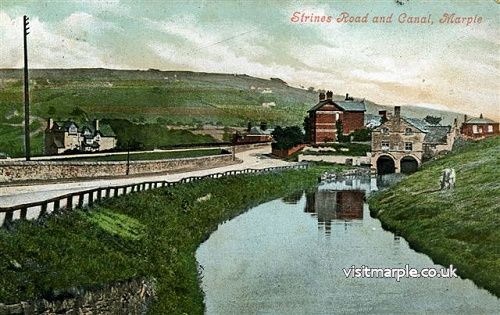 There are three main elements in the project for Revealing Oldknow’s Legacy - Marple Aqueduct, Mellor Mill and the Lime Kilns. The aqueduct is well-known and has just been repaired; excavations at Mellor Mill are well under way; but what about the Lime Kilns? Do they deserve more prominence and is anything happening to make them more accessible? Who better than the County Archaeologist for Greater Manchester, Norman Redhead.
There are three main elements in the project for Revealing Oldknow’s Legacy - Marple Aqueduct, Mellor Mill and the Lime Kilns. The aqueduct is well-known and has just been repaired; excavations at Mellor Mill are well under way; but what about the Lime Kilns? Do they deserve more prominence and is anything happening to make them more accessible? Who better than the County Archaeologist for Greater Manchester, Norman Redhead.
He began by explaining just what a unique asset we had in the community. It was, and still is, one of the largest complexes in the country. It was notable for its gothic architecture, a statement of confidence and grandeur as it stared across the Goyt valley towards Mellor. And, uniquely, it incorporated housing in its design from the start. (Above:The Strines Road arm of the canal, now filled in, which used to run from Possett Bridge to the Lime Kilns.)
- Details
- Category: Meetings 2015 - 2016
- Hits: 6471
Read more: 14th December: Norman Redhead – Marple Lime Kilns
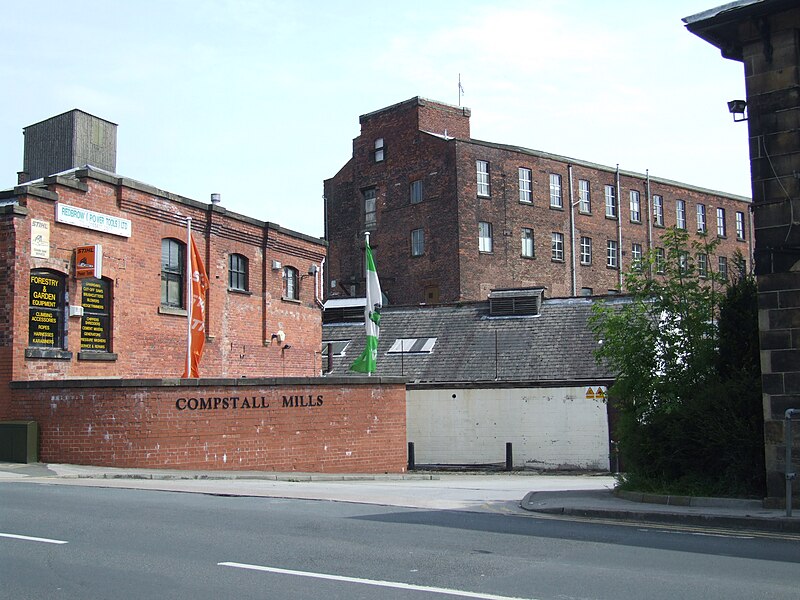
Although it was a rural backwater it had some key advantages for a new industry - water power from the Etherow, coal from local mines and good transport links via the Peak Forest Canal and the network of new turnpikes to Stockport, Glossop, New Mills and Buxton.
The Andrew family had built a textile printing works in Harpurhey and had sufficient capital to expand. Thomas Andrew started by building facilities for dyeing and printing cloth, a building which still survives. However, he and his son, George, saw....
- Details
- Category: Meetings 2015 - 2016
- Hits: 8680
Read more: 18th January 2016: Judith Wilshaw – Compstall and Cooperation
 Slum housing was not a unique phenomena of the Industrial Revolution; John Milton had complained about it 200 years before:
Slum housing was not a unique phenomena of the Industrial Revolution; John Milton had complained about it 200 years before:
“As one who long in populous city pent,
Where houses thick and sewers annoy the air”
However, Manchester in the nineteenth century took slum dwelling to new extremes. No one was more qualified to describe this than Mike Nevell, our speaker. As Head of Archaeology at the University of Salford he has been involved in investigating living conditions across the Manchester region for more than twenty years. With detailed investigations at over 200 sites it is possible to give the human background to the Industrial Revolution.
Image Right; The ‘binding poverty’ of Angel Meadow, Manchester, where mortality rates were the highest in the country
- Details
- Category: Meetings 2015 - 2016
- Hits: 21893
Read more: 15th February: Mike Nevell – Housing in 19th century Manchester
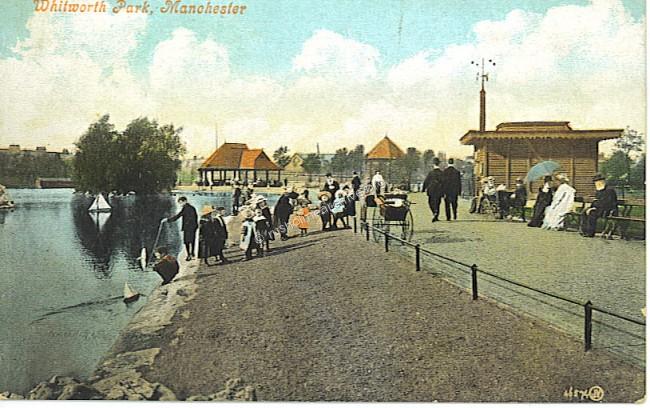 Whitworth Park,Ruth Colton, our speaker, arrived in Marple as a newly minted PhD. That very afternoon she had passed her final oral examination and could now call herself “Doctor.” Although she was not able to advise upon the various aches and pains endured by our members she did deliver a fascinating talk on the development and use of Whitworth Park. Her particular interest was in how the children were supposed to use the park and how they actually used it in practice. She had been part of an archaeological team excavating in the park and a lot could be learned from the detritus lost or thrown away over the years. Describing this in the context of the park history brought the subject to life as it contrasted the “top down” influences of the powers that be with the “bottom up” influences forced on the park by the children. The adults might prefer the bandstand and the meandering pathways but the children congregated behind “the Mound” where they could play out of sight of the grown-ups.
Whitworth Park,Ruth Colton, our speaker, arrived in Marple as a newly minted PhD. That very afternoon she had passed her final oral examination and could now call herself “Doctor.” Although she was not able to advise upon the various aches and pains endured by our members she did deliver a fascinating talk on the development and use of Whitworth Park. Her particular interest was in how the children were supposed to use the park and how they actually used it in practice. She had been part of an archaeological team excavating in the park and a lot could be learned from the detritus lost or thrown away over the years. Describing this in the context of the park history brought the subject to life as it contrasted the “top down” influences of the powers that be with the “bottom up” influences forced on the park by the children. The adults might prefer the bandstand and the meandering pathways but the children congregated behind “the Mound” where they could play out of sight of the grown-ups.
- Details
- Category: Meetings 2015 - 2016
- Hits: 5539
Read more: 21st March: Ruth Colton – Whitworth Park: Pleasure, Play & Politics
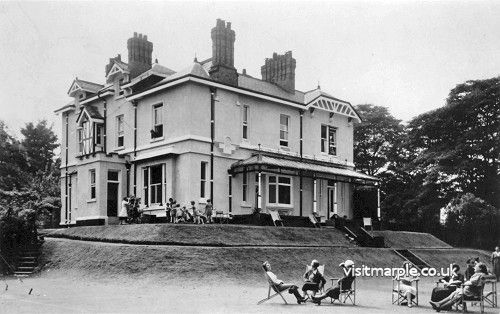 We are the Marple Local History Society so you could not have a more local subject than Brentwood – an appropriate end to a memorable season. Brentwood and its residents were an integral part of Marple society for over thirty years and many visitors came to the meeting with experiences and anecdotes to relate. Michael Lambert shared some of his PhD research with us and, in return, we shared with him some of the atmosphere and anecdotes from those days more than half a century ago.
We are the Marple Local History Society so you could not have a more local subject than Brentwood – an appropriate end to a memorable season. Brentwood and its residents were an integral part of Marple society for over thirty years and many visitors came to the meeting with experiences and anecdotes to relate. Michael Lambert shared some of his PhD research with us and, in return, we shared with him some of the atmosphere and anecdotes from those days more than half a century ago.
- Details
- Category: Meetings 2015 - 2016
- Hits: 6433
Read more: 18th April: AGM & Michael Lambert - History of Brentwood Recuperative Centre, 1937-70
 A series of summer walks emerged from the AGM questionnaires, which many members completed. These have proved a successful extension to the Society’s ‘season’, outdoor ‘meetings’ in Marple, Marple Bridge and Hayfield. These four walks, in the months from May to August, were led by Hilary Atkinson, Neil Mullineux and Judith Wilshaw. Proving very popular, they may be continued next year.
A series of summer walks emerged from the AGM questionnaires, which many members completed. These have proved a successful extension to the Society’s ‘season’, outdoor ‘meetings’ in Marple, Marple Bridge and Hayfield. These four walks, in the months from May to August, were led by Hilary Atkinson, Neil Mullineux and Judith Wilshaw. Proving very popular, they may be continued next year.
- Details
- Category: Meetings 2015 - 2016
- Hits: 5295

